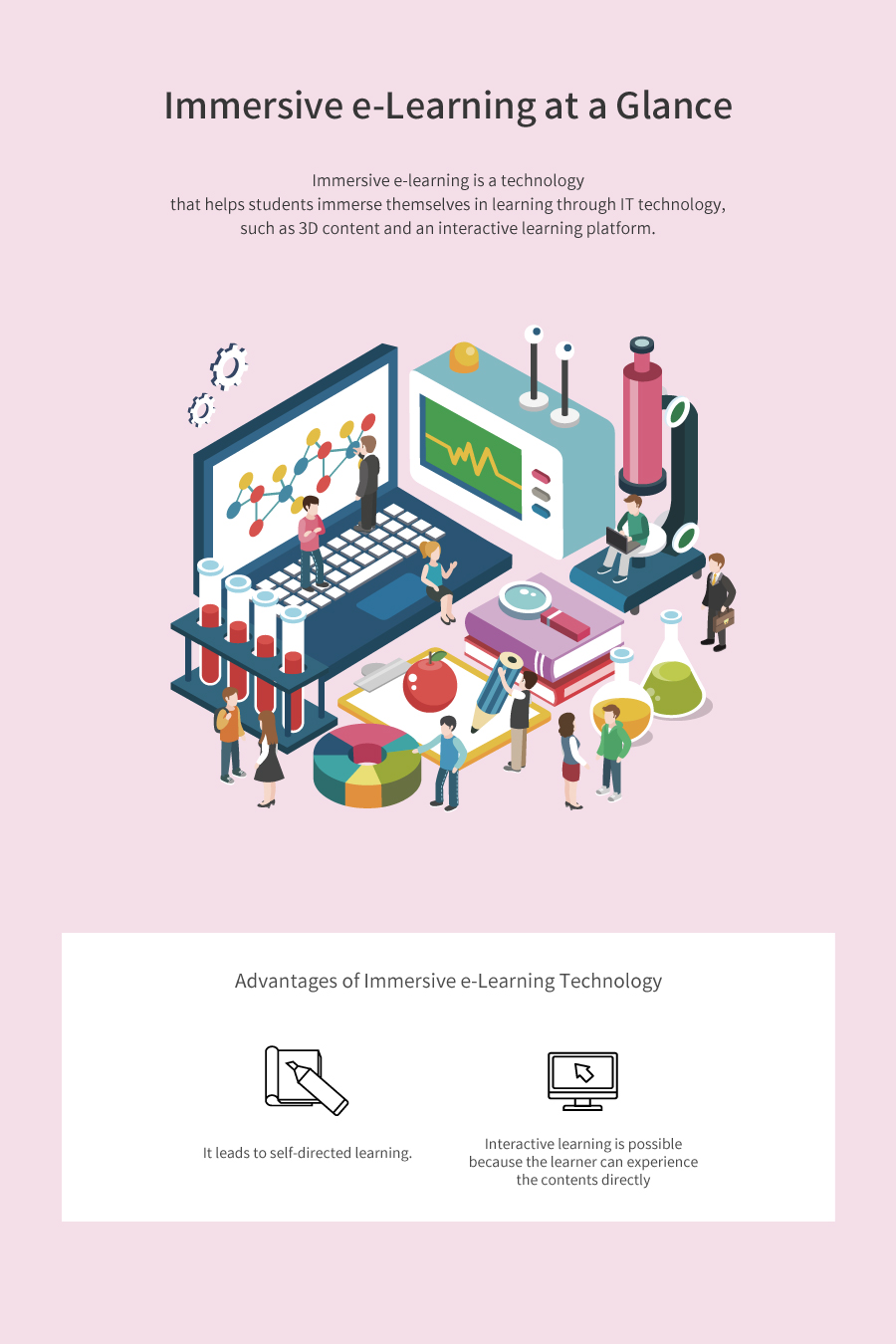




Virtual reality-base
Immersive e-learning technology
leading to self-directed learning
With the outstanding advancements made in IT sector, many information technologies are beginning to be applied to various fields. In particular, a remarkable development is taking place in the field of education, as information and communication technologies employing multimedia platforms are introduced to educational applications. Against this backdrop, ETRI's 'Immersive e-learning technology' represents the start of a new paradigm for education.

01
The world's first
virtual learning system
for English education
As we have witnessed a remarkable advancement in information technology in the 21st century knowledge-based information society, information technology is being actively applied to various fields. Among others, the education industry is employing information technology based on multimedia platforms in order to enhance the efficiency of learning by making learners interactively feel and experience the contents, rather than being forced to simply absorb the knowledge delivered to them. In 2010, the domestic e-learning content market grew by 5.8% year-on-year to KRW 538.3 billion. Thanks to the steady growth in e-learning sector, computer-based education using multimedia has begun to take root in Korea. In this domestic context, ETRI has been developing immersive e-learning technology that enables learners to become more immersed in the materials they are learning. This is a system in which learners manipulate and experience learning contents on their own, different from old-fashioned cramming and the one-way learning experience.
The aim of this immersive e-learning technology is to use information technology such as 3D contents and interactive learning platforms to create a system that can help students understand difficult concepts in the academic curricula of both public and private education. Experiential contents based on virtual reality will help people to feel through their sensory organs a virtual situation and environment created by the computer. Therefore, the user can be more immersed in the learning experience, and can even interact with the contents. In this way, learning can move from the passive to the active via virtual reality. Since learners will be present in virtual reality, they will be able to learn using their five senses (sight, hearing, touch, smell and taste) in the future. Naturally, the experiential, virtual reality-based learning environment will increase learner interest, satisfaction and level of concentration on the contents they are learning.

02
Learning
by Experience
Then, how can augmented reality be implemented in practice? The augmented reality system consists of learning materials, the client (marker identifier/content viewer), immersive content making tools and the user interface. First, a geometric 'marker', from which 3D information can be derived, is inserted into the learning materials. Then, a webcam recognizes this marker on the page of the textbook. In this way, using mobile or control markers, students can interact with virtual objects created on the monitor.
This system has been applied to various subjects such as Mathematics, English and Science. Rectangular parallelepiped content is a good example of immersive learning in mathematics: in this type of content, the learner’s worksheet is loaded by a webcam and a three-dimensional rectangle is created on the worksheet as an augmented shape. The learner can mark faces, corners and vertexes of the rectangular parallelepiped using markers however they want or following the voice instructions provided by the content. In English, the immersive learning content allows users to learn various expressions related to directions. Through direct interaction with the contents, users can also learn how to ask a question again if they did not fully understand a response from a native speaker to their initial question. In Science, the immersive learning contents for temperature and wind enable the students to learn daily or weekly temperature changes, sand and water heat experiments, and movement of warm and cold air in a platform employing the augmented reality. With the contents for electric circuits, students can learn about the advantages and disadvantages of serial and parallel circuits and the operation principles of electric circuits. The immersive learning content helps students learn not by cramming but by experience and interaction. This has also spurred the development of diverse IT learning tools, contributing to advancements in immersive e-learning tools as well.




